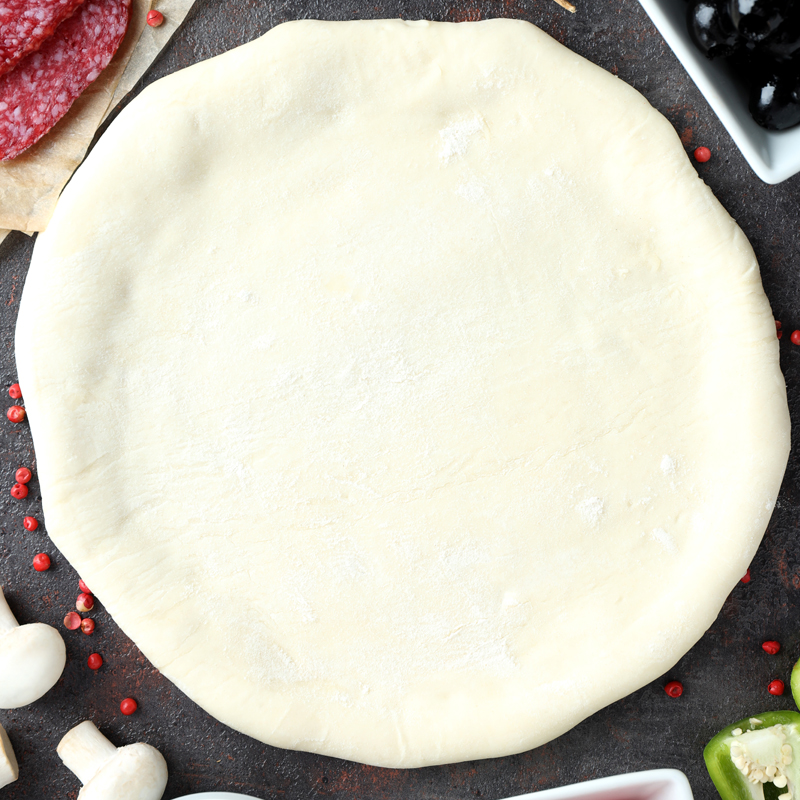
100 gr |
-- |
|
|---|---|---|
| Carbohydrate (gr) | 15.04 |
4928.47 |
| Protein (gr) | 3.59 |
1176.23 |
| Fat (gr) | 12.46 |
4083.43 |
| Fiber (gr) | 1.36 |
445.97 |
| Cholesterol (mg) | 14.64 |
4795.8 |
| Sodium (mg) | 325.27 |
106557.75 |
| Potassium (mg) | 392.16 |
128471.4 |
| Calcium (mg) | 78.15 |
25603.27 |
| Vitamin A (mg) | 46.04 |
15084.01 |
| Vitamin C (mg) | 6.16 |
2019.31 |
| Iron | 0.62 |
203.1 |
Pizza dough is the foundation of one of the world’s most popular foods—pizza. While it may seem like a simple mixture of flour, water, yeast, and salt, the type of ingredients and preparation methods significantly impact its texture, flavor, and nutritional value. This article explores the composition of pizza dough, its nutritional aspects, and its potential health effects.
The calories in pizza dough are 295 calories per 100 grams.
A traditional pizza dough typically consists of the following ingredients:
Flour: The primary component, usually made from wheat. The protein content in flour determines the dough’s gluten strength, affecting its elasticity and chewiness.
Water: Hydrates the flour and activates gluten formation.
Yeast: Ferments the dough, producing carbon dioxide that helps it rise and develop flavor.
Salt: Enhances taste and strengthens gluten structure.
Olive Oil (optional): Adds richness, enhances crispiness, and slows down moisture loss during baking.
Sugar (optional): Feeds the yeast and contributes to browning.
The nutritional content of pizza dough depends on the type of flour and additional ingredients used. Below is an approximate breakdown per 100 grams of basic pizza dough:
Calories: 250–300 kcal
Carbohydrates: 50–60 g
Protein: 7–10 g
Fat: 1–3 g
Fiber: 2–4 g (higher in whole wheat dough)
Pizza dough is primarily composed of carbohydrates, which provide energy. However, refined flour-based dough has a high glycemic index, potentially leading to rapid blood sugar spikes. Whole wheat or alternative grain dough can help regulate blood sugar levels better.
Traditional pizza dough contains gluten, which some individuals with gluten sensitivity or celiac disease must avoid. Alternatives like gluten-free flour blends or cauliflower-based dough offer suitable substitutes.
Using whole grain flour increases fiber, vitamins, and minerals, making the dough more nutritious. Additionally, fermentation (e.g., sourdough pizza dough) can enhance digestibility and improve nutrient absorption.
For a more nutritious option, consider these alternatives:
Whole Wheat Dough: Higher in fiber and nutrients.
Sourdough Pizza Dough: Contains probiotics and is easier to digest.
Gluten-Free Dough: Made with rice flour, almond flour, or chickpea flour.
Vegetable-Based Dough: Includes cauliflower or zucchini for a low-carb option.
Pizza dough, though simple in composition, has a significant impact on the texture, taste, and nutritional value of pizza. Choosing the right type of flour, fermentation method, and ingredient modifications can enhance its health benefits. Whether you prefer classic dough or a healthier alternative, understanding its nutritional aspects helps in making informed choices for a balanced diet.